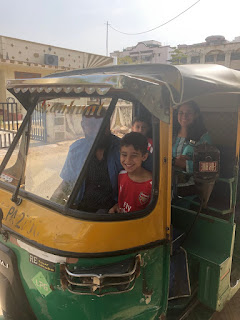Caste Curriculum and Design Thinking Process and Participatory Action Research
Today, I got to present my thinking about how to teach the Caste System in India to 9th/10th graders using the Design Thinking Process (DTP) and Participatory Action Research (PAR).
Actually, this assignment was given by my Professor for the whole class to complete. I took it a step further to incorporate what I have been learning and infused a pedagogy to the content.
The student posers focused on the content and how they would ensure that students learned the right content about the Caste System in India.
I challenged the norm and tried to vocalize my belief and advocacy for more dynamic teaching using DTP/PAR. So I literally planned a unit on Caste as I would in the States. I created an essential question, backwards mapped and then created learning objectives.
It was fun. John and I did it together. We showed on our 6 posters all parts of teaching using DTP/PAR and some structures I use in the US such as the workshop model. I left out the mini-lesson because if it is truly dynamic, it may changed based on what the students are learning and researching in class.
Actually, this assignment was given by my Professor for the whole class to complete. I took it a step further to incorporate what I have been learning and infused a pedagogy to the content.
The student posers focused on the content and how they would ensure that students learned the right content about the Caste System in India.
I challenged the norm and tried to vocalize my belief and advocacy for more dynamic teaching using DTP/PAR. So I literally planned a unit on Caste as I would in the States. I created an essential question, backwards mapped and then created learning objectives.
It was fun. John and I did it together. We showed on our 6 posters all parts of teaching using DTP/PAR and some structures I use in the US such as the workshop model. I left out the mini-lesson because if it is truly dynamic, it may changed based on what the students are learning and researching in class.
After completing this presentation, I realised that I went through all the 5 stages of Design Thinking through my Fulbright.
Empathises (Research, Participate)- For the first two month here in India, I empathised with educators about the education system in India. I took classes, I listened and I observed.
Define (Research, Participate)- I understood and defined that most of the world struggles with balancing standardised assessments and student centered project based learning. My question then becomes how do teachers do both?
Ideate (Participate, Action)- I have thought about ways to advocate for this type of pedagogy to be taught to Professors, in teacher training programs, and to current teachers.
Prototypes and Test (Participate, Action)- I have created mini-DTPs and a curriculum using DTP and PAR. I am now working on a "How to" Manual for educators. As I create them I am testing them out by presenting them or seeing them implemented in a classroom.
How cool is that?
Ultimately, DTP and PAR are ways to be reflective and for some of us it comes naturally and for others it needs to be practiced. And for our children of the future, it needs to be taught and practiced to create a better world in which we all live in. The end.







Comments
Post a Comment